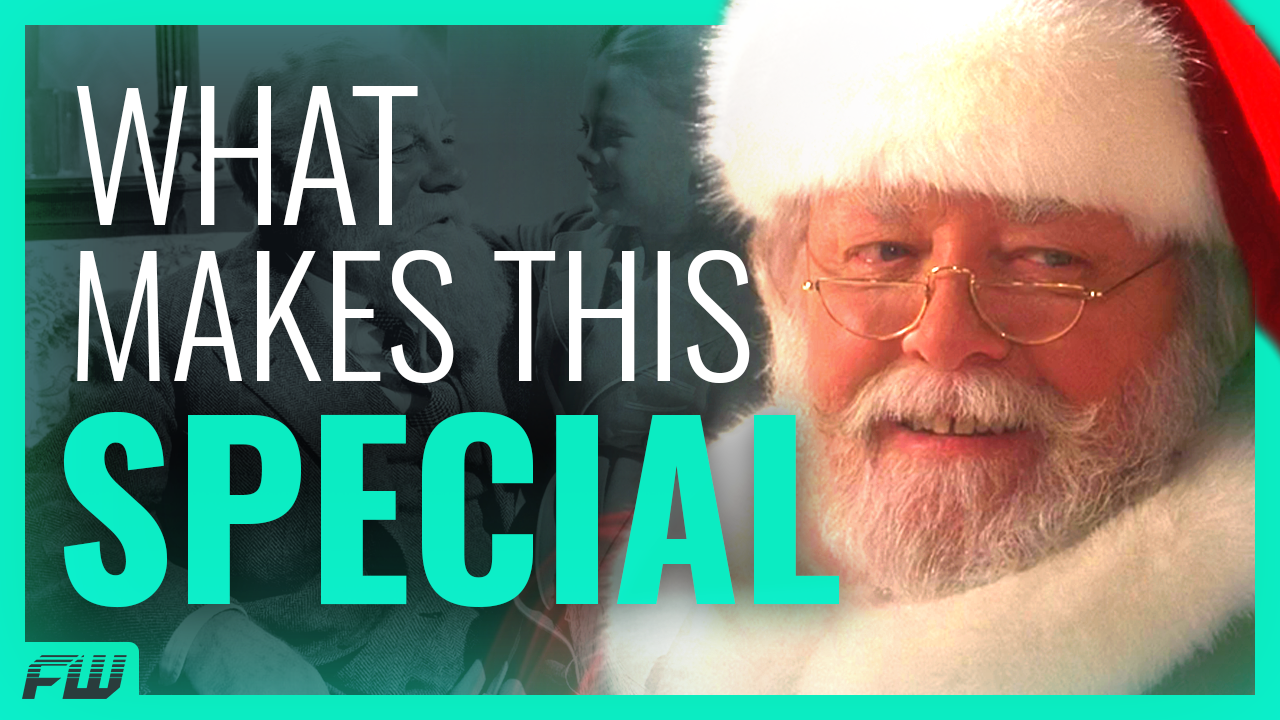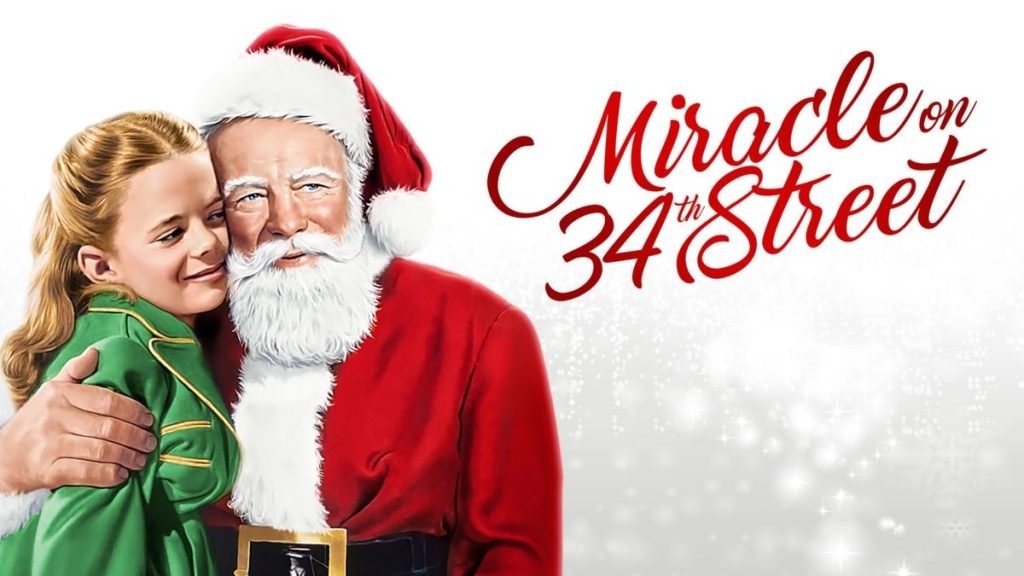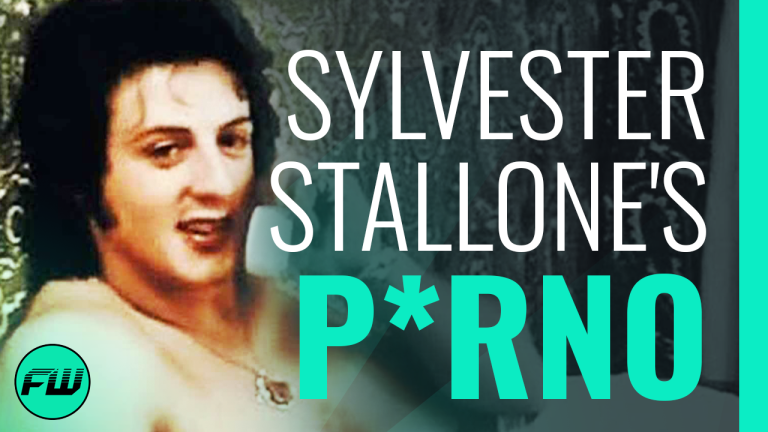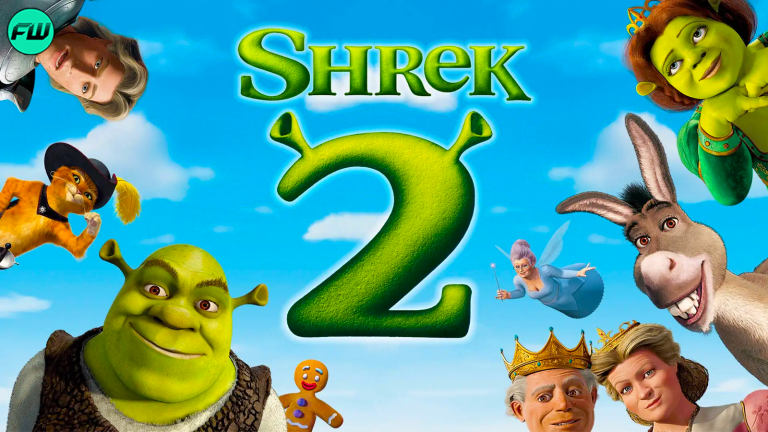In this FandomWire Video Essay, we compare and contrast the 1947 Miracle on 34th Street with the 1992 Miracle on 34th Street, and how both versions struck Christmas gold twice.
Check out the video below:
Subscribe & hit the Notification Bell so you never miss a video!
What Made Both Miracle On 34th Street Films Special?
Santa Claus is a staple of the Holiday Season. Old Saint Nick. Chris Cringle. The Jolly Big Guy. He goes by many names but serves one specific and important purpose. To spread joy and happiness to the children of the world by delivering toys and gifts on Christmas morning. It’s a seemingly impossible task, but children believe in it wholeheartedly. Through the innocent eyes of a child, the world is a fantastic place capable of magical feats. Like flying sleighs. Reindeer with glowing red noses. And one man visiting every household in the world in a single night.
There is something so pure about a child racing into the living room on a cold Christmas morning to find that Santa had been there! The presents were under the tree! The cookies had been eaten and the milk had been drank! It’s that faith in things that go beyond our reality and understanding that has inspired so many Christmas films over the years. Santa, and more specifically, the BELIEF in Santa, is a common, recurring theme. The 1947 Christmas Classic Miracle On 34th Street and its 1994 remake, question that unwavering faith by putting the concept of Santa Claus on trial and in the hands of a courtroom judge. A courtroom is a place that relies on proof. Tangible evidence and testimony. So, how can something that requires faith be proven in a court of law… is it possible to prove the existence of Santa? Let’s take a look back at how they managed to strike gold TWICE and craft a Christmas Courtroom drama that was captivating, heartfelt, and genuine.
A great remake keeps the heart of the story the same while introducing new ideas and concepts to create something original. Miracle on 34th Street did exactly that. Both stories take place during the weeks leading up to Christmas and follow a kind-hearted department store Santa called Kris Kringle, who claims to be the real-life Santa Claus. A claim that raises more than a few eyebrows from skeptics and non-believers. Following a minor violent confrontation,
Kris finds himself on the wrong end of the law. And when he continues his claims that he’s Santa Claus, the courts are brought in to rule on Kris’ mental health. Essentially, he has to prove that he is the real Santa Claus, or he’ll be committed to a psychiatric hospital. Much of the story plays out the same in both films, but there are various subtle differences throughout, and one major and important difference is in the climactic closing arguments of the court battle that shifts the film’s overall meaning.
The original film was an instant hit. It was nominated for several Academy Awards, including Best Picture, and went on to take home three golden statues. One for Best Supporting Actor, which went to Edmund Gwenn, and two for writing. Gwenn plays the pivotal role of Kris Kringle. The Department Store Santa, hired by Macy’s to play the character in their annual Macy’s Thanksgiving Day Parade and at their flagship store in New York City. In the remake, Macy’s is swapped out for the fictional department store “Coles.” It’s a small difference that came about because Macy’s declined to be involved in the new take on the classic tale.
Another small difference comes in the moment that Kris Kringle brings joy to a young girl who doesn’t speak English, by talking with her in Dutch. The young girl and her mother are overwhelmed with joy that the girl gets the opportunity to speak with Santa and tell him what she wants for Christmas. She’s included despite the language differences. It’s a great moment that showcases how spectacular Kris Kringle is at his job. But it also serves another purpose. The real Santa travels the entire world, and it can be assumed that he would speak many languages. It’s a fact that helps bolster Kris’ claims that he is, in fact, the real Santa, while not necessarily proving it. It’s vital to the story that direct answers not be given. Because it’s a story about faith. Proof is not required with manners of faith.
In the remake, the girl is swapped out for a girl with a hearing impairment, who can only communicate through sign language. Kris, now played by Richard Attenborough, who’s most commonly remembered as is able to use sign language to communicate with the young girl. It’s another small and subtle difference that showcases the kindness of the mysterious department store, and possibly real, Santa.
However, it’s in the closing moments of the story’s courtroom battle that the two films set themselves apart. Both of them are unique and different, but their differences cater to different themes and motives.
Oh, And… SPOILER WARNING if you haven’t seen these films, but I mean, the first one is literally SEVENTY-FOUR years old. You’ve had plenty of time to see it by now. Anyway, moving on.
In the original film, John Payne plays Fred Gailey. The friend and attorney representing Kris Kringle in the court proceedings. Fred is a vital character. As an adult, he hasn’t lost his childlike wonder and holds tight to the belief that Kris really could be Santa Claus. Or at least, that there is nothing to say he’s not. Proving Kris ISN’T Santa seems to be as unlikely as proving he IS. The state prosecutor rests his case early on after getting Kris Kringle to proclaim to the court that he is Santa Claus. The prosecutor and Fred are at polar ends of their beliefs. And in a way, it’s that very belief that is on trial here. The prosecutor doesn’t only suggest that Kris Kringle isn’t Santa Claus, but that he CAN’T be Santa. Because Santa doesn’t exist. Because it’s impossible. Because… magic isn’t real.
It’s through the use of the U.S. Postal Service that Fred makes his case. You see, the New York City Postal Workers make the decision to deliver all letters addressed to Santa Claus directly to Kris Kringle himself. Essentially asserting that the US Postal Service accepts, and believes, that Kris is in fact Santa. Fred makes the argument to the courts that since the Postal Service is a branch of the United States Federal Government, their acceptance of Kris as Santa represents the government as a whole accepting and acknowledging Kris as Santa. It’s a strong legal argument that works. The Courts agree and Kris… erm, I mean Santa, is free to go.
But what if the Postal workers hadn’t made that decision? Without the last-minute deliveries of bags upon bags of letters to Santa, Fred would likely have lost his case and Kris would have been committed. This ending chooses to showcase Fred utilizing his skills as a lawyer to essentially find a loophole in the system. It’s more of a lucky break than a clear win.
In the remake, they take the conclusion in a different direction. A direction that better exemplifies the film’s meaning and drive. The 1994 version finds Kris Kringle in the same predicament. On trial and facing commitment to a mental health facility due to his claims of being Santa Claus. Here, Fred is played by Dylan McDermott and he makes an argument on Kris’ behalf that’s quite different from the original. The young Susan, played by everybody’s favorite 90s child actress Mara Wilson, hands the judge a Christmas Card with a one-dollar bill inside. She’s not trying to bribe the judge, but instead trying to point out a very important phrase written on the currency. Circled in red are the words “In God We Trust.” A demonstration of the government’s acceptance and declaration of faith in a higher power that can not be proven or disproven. Something that relies on… Faith.
The judge then acknowledges to the court that the dollar bill is issued by the Treasury of the United States and backed by the U.S. government. By placing the words “In God We Trust.” The federal government has openly declared their acceptance of God through faith and nothing more. The movie isn’t trying to make a case for or against any specific religion. Instead, it’s pointing out that trust and faith in something that goes beyond our understanding has already been accepted by the U.S. government through the national currency. And as a result, the State of New York can follow their example and make a ruling that is also based on faith, by ruling that Santa Claus is real and that Kris Kringle is him.
Where in the original story Kris Kringle is cleared through a legal loophole and an examination of federal law, the remake sees him cleared through faith. That ending brings the story full circle and amplifies the values and messages of the film. Both films dissect the importance of believing in something and the freedom that comes with letting go of skepticism and pessimistic ideals. But the original focuses more on individual beliefs and how to navigate those beliefs through the rest of the world. While the remake looks at faith through a wider lens and examines faith as a commitment of the people, rather than the individual.
It’s a rare example of an original and a remake that both manage to craft relevant and heartfelt stories and THAT… is a Christmas miracle.
Do you consider Miracle on 34th Street a Christmas Classic? Which ending do you prefer? Let us know in the comments. And be sure to like, subscribe and hit the notification bell for more great content. Merry Christmas to all, and to all a good night.
Follow us for more entertainment coverage on Facebook, Twitter, Instagram, and YouTube.
Note: If you purchase an independent product featured on our site(s), we may earn a small commission from the retailer. Thank you for your support.









